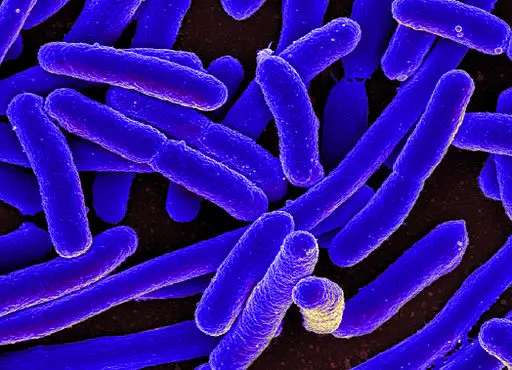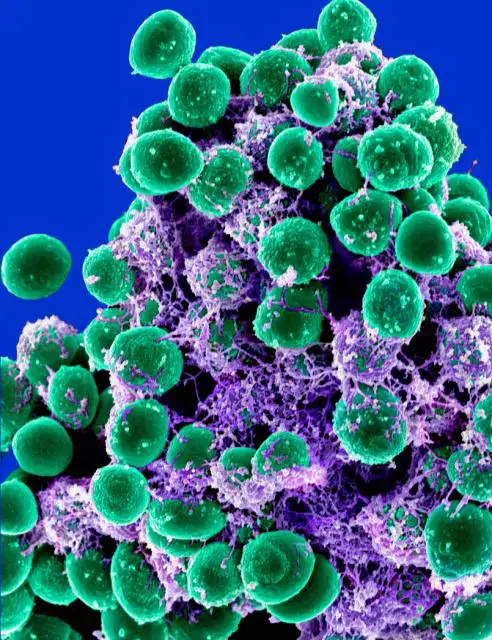Does Freezing Kill Bacteria?
What is freezing temperature? - For the most part, the term freezing temperature is used to refer to the temperature at which water freezes. This is at 0 degrees C (32 degrees F).
Classification of bacteria based on the optimal temperature range
Bacteria can be divided into three major groups based on their preferred/optimum temperature range.
These include:
- Psychrophiles - Psychrophilic bacteria are bacteria that are capable of thriving in cold temperatures such as Polar Regions and some deep seas. They are also referred to as cold-loving bacteria. Though they grow optimally at temperatures between 1- and 15 degrees C, these bacteria can survive and grow at temperatures between 0 (and lower) and 20 degrees C. Unlike other bacteria, Psychrophiles have enzymes that function best under low temperatures. For this reason, temperatures above 20 degrees C directly affect the catalytic action of these enzymes and consequently affect bacterial growth. Some examples of Psychrophilic bacteria are Arthrobacter agilis and some Pseudomonas species.
- Mesophiles - Mesophilic bacteria grow best under moderate temperatures. Specifically, they prefer a temperature range of between 20 and 45 degrees C, with 30 to 39 degrees C being the ideal range for optimum growth. Mesophiles can be found in different habitats in soil and water. Moreover, given that they are commonly found in areas with a moderate temperature (where the majority of multicellular organisms are located), they can be found in various hosts where they exist as parasites, commensals, or as symbionts. Some examples of mesophiles include Proteus vulgaris, Streptococcus pyogenes, and Staphylococcus aureus.
- Thermophiles - As the name suggests, thermophiles are bacteria species that are commonly found in areas with relatively high temperatures. Most of the bacteria that fall in this category prefer temperatures of between 50 and 85 degrees C. However, they can also survive and continue growing at between 45 and 125 degrees C. They can be found in various habitats including hot springs (e.g. at Yellowstone National Park) and thermal vents. Some examples of thermophillic bacteria include Alicyclobacillus acidocaldarius, Alicyclobacillus sendaiensis, and Alicyclobacillus acidiphilus.
* Some bacteria are classified as Hyperthermophiles. Members of this group can grow and thrive in areas with temperatures above 80 degrees C.
* Psychrophiles and Thermophiles are collectively referred to as extremophiles. This is because they can thrive in extreme environments such as thermal vents, polar regions, etc.
Impact of low temperatures on bacteria
While some bacteria, Psychrophiles, grow well in low and even freezing temperatures, many others, mesophiles and thermophiles, are not well suited for such conditions.
In environments characterized by very low to freezing temperatures, bacteria like Moritella abyssi possess a number of characteristics that allow them to thrive. For instance, in deep sea, the enzyme of the bacterium Moritella abyssi has been shown to function well in temperatures between 5 and 25 degrees C.
Such bacteria contain polyunsaturated or saturated fatty acids in their membrane as well as distinct lipid composition which promote survival in low temperatures. Some species have also been shown to produce ice-binding proteins (antifreeze) to lower the freezing point.
Essentially, a cell membrane consists of a phospholipid layer with proteins and resembles a colloidal solution. This contributes to its dynamic nature which in turn promotes various biological functions and processes.
As the temperature decreases, the membrane of most bacteria, particularly mesophiles and thermophiles, becomes increasingly more viscous and thus less fluid.
When the temperature approaches freezing, studies have shown the membrane to become more gel-like which further reduces its fluidity. Aside from the loss of function with decreased fluidity, the membrane may also be damaged by ice crystals.
While very low temperatures have a negative impact on the membrane, they also affect other proteins, particularly those involved in catalytic reactions. As a result of the phase change (change of matter from one state to another), studies have shown these proteins to undergo denaturation (a state where bonds/links within the protein molecule are broken) thus affecting natural processes.
* Along with very low temperatures, heat also denatures proteins. In this case, however, heat increases fluidity in the membrane which also negatively affects metabolic processes.
How bacteria responds to very low temperatures/freezing
Whereas very high temperatures kill bacteria by destroying various structural components, the majority of bacteria can survive freezing conditions. Even in cases where membrane fluidity is affected and protein functions inhibited, freezing generally suspends various processes and puts the organism in a hibernation-like state until conditions improve (temperature increases to normal range).
One of the most common responses to low temperatures by bacteria is the production of cold-induced proteins (Cips). Based on studies involving the bacterium E. coli, the production of these proteins increases with the continued drop in temperature.
Some examples of cold-induced proteins of E. coli include:
- Cold shock protein
- RNA helicase csdA
- Initiation factors (e.g. 2a and 2b)
- Exoribonucleases PNPase
As mentioned, a significant drop in temperature affects the fluidity of the membrane, functions of various enzymes, and might even cause some damage to the membrane. Here, the production of these proteins serves to counteract these effects and allow the organism to effectively adapt to the new conditions.
Cold shock proteins (Csp), which are some of the most popular cold-induced proteins, are nucleic acid-binding proteins that can be found in the three categories of bacteria mentioned above. In the event of a cold shock, they act as RNA chaperones and serve to destabilize secondary structures of target RNA in order to maintain the single-stranded nature of the RNA.
Given that many cellular processes are significantly slowed down, this contributes to efficient transcription and translation at low temperatures. Though these processes are also slowed down and occur at a much slower rate than they normally would, they allow the cell to survive while also participating in necessary repairs through translation.
Some of the functions of the other proteins (cold-induced proteins) include:
- RNA helicase csdA - Initiating translation, gene regulation, and biogenesis of the 30S subunit. The protein plays an indirect role in the production of various essential proteins during this period.
- Exoribonucleases PNPase - Plays an important role in mRNA degradation. In doing so, the enzyme helps eliminate mRNA that is no longer required in the cell.
- Exoribonucleases RNase R - Serves to eliminate linear RNA so as to retain circular RNA.
- Initiation Factor 2 (IF2) - Controls entry of tRNA into the ribosome while also promoting the joining of the small and large ribosomal subunits during translation.
Bacteriology as a field of study
Bacterial Transformation, Conjugation
How do Bacteria cause Disease?
Bacteria - Size, Shape and Arrangement - Eubacteria
How do Antibiotics kill Bacteria?
Does Salt Water kill Bacteria?
Which Bacteria cause Food Poisoning?
Return from "Does Freezing Kill Bacteria?" to MicroscopeMaster home
References
Dressaire, C. et al. (2018). PNPase is involved in the coordination of mRNA degradation and expression in stationary phase cells of Escherichia coli.
Timonen, R. et al. (2016). Cold Shock Proteins: A Minireview with Special Emphasis on Csp-family of Enteropathogenic Yersinia.
Xu, Y. , Feller, G., Gerday, C., and Glansdorff, N. (2020). Metabolic Enzymes from Psychrophilic Bacteria: Challenge of Adaptation to Low Temperatures in Ornithine Carbamoyltransferase from Moritellaabyssi.
Links
https://www.sciencedirect.com/topics/agricultural-and-biological-sciences/psychrophilic-bacteria
Find out how to advertise on MicroscopeMaster!






